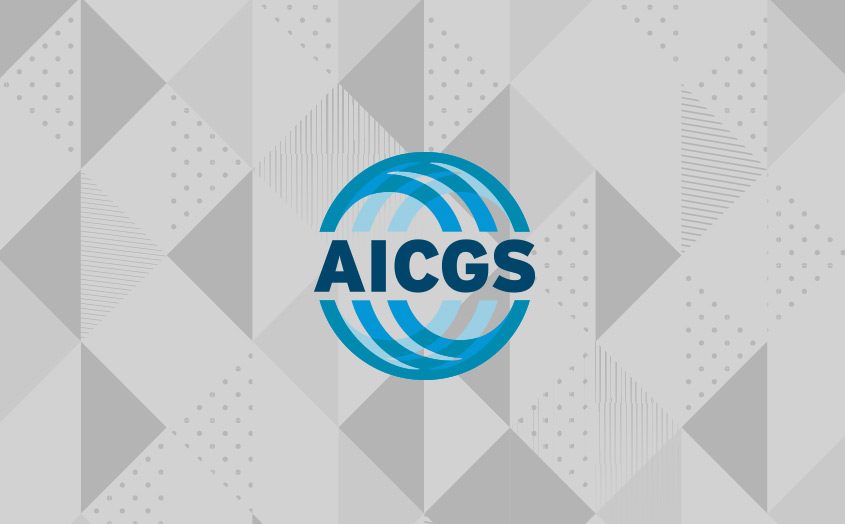
Putin’s Predicament: What is to be done?

Jackson Janes
President Emeritus of AGI
Jackson Janes is the President Emeritus of the American-German Institute at the Johns Hopkins University in Washington, DC, where he has been affiliated since 1989.
Dr. Janes has been engaged in German-American affairs in numerous capacities over many years. He has studied and taught in German universities in Freiburg, Giessen and Tübingen. He was the Director of the German-American Institute in Tübingen (1977-1980) and then directed the European office of The German Marshall Fund of the United States in Bonn (1980-1985). Before joining AICGS, he served as Director of Program Development at the University Center for International Studies at the University of Pittsburgh (1986-1988). He was also Chair of the German Speaking Areas in Europe Program at the Foreign Service Institute in Washington, DC, from 1999-2000 and is Honorary President of the International Association for the Study of German Politics .
Dr. Janes is a member of the Council on Foreign Relations, the International Institute for Strategic Studies, the Atlantic Council of the United States, and American Purpose. He serves on the advisory boards of the Berlin office of the American Jewish Committee, and the Beirat der Zeitschrift für Außen- und Sicherheitspolitik (ZfAS). He serves on the Selection Committee for the Bundeskanzler Fellowships for the Alexander von Humboldt Foundation.
Dr. Janes has lectured throughout Europe and the United States and has published extensively on issues dealing with Germany, German-American relations, and transatlantic affairs. In addition to regular commentary given to European and American news radio, he has appeared on CBS, CNN, C-SPAN, PBS, CBC, and is a frequent commentator on German television. Dr. Janes is listed in Who’s Who in America and Who’s Who in Education.
In 2005, Dr. Janes was awarded the Officer’s Cross of the Order of Merit of the Federal Republic of Germany, Germany’s highest civilian award.
Education:
Ph.D., International Relations, Claremont Graduate School, Claremont, California
M.A., Divinity School, University of Chicago
B.A., Sociology, Colgate University
Expertise:
Transatlantic relations, German-American relations, domestic German politics, German-EU relations, transatlantic affairs.
__
Vladimir Putin is tracking another Vladimir—this one with the last name Lenin—who published a pamphlet in 1902 called “What Is to Be Done: Burning Questions of Our Movement.” That Vladimir was laying out the need to form a Marxist vanguard to convince Russia’s workers to follow him and the party. One hundred years later, Lenin is still visible in his tomb in Moscow, but his theory was buried along with the Soviet Union.
Today’s Vladimir is posing a similar question, but with a different purpose. What is to be done to make Russia the great power it once was? Angered for years by the collapse of the Soviet superpower and his perception of Western condescension toward Russia, Putin and his allies are now trying to remind the world of Russia’s preeminent position on the world stage.
Despite efforts to evaluate how Moscow—steered by Putin over the last decade—has been building a very nationalist mood, experts did not forecast the Crimean crisis. The Crimean invasion seemed to shock and focus those who thought Russia could be “reset” as part of the West, be it by becoming part of NATO or perhaps even the European Union. After all, the Cold War was over and won by the West, right? There were no real alternative scenarios left.
But now in Ukraine, we have experienced another rude reminder that we are still a very long way from consensus on what constitutes the norms of international relations. It’s a reminder coming on the centennial of the best demonstration of that gap—the carnage of the war beginning in 1914.
It is not only Putin’s predicament in asking the question: what is to be done? Europe and the United States, along with many other friends and allies, have to confront the same challenge. What is to be done when a country decides to make up their own rules of the road and flaunts the rules intended to be safeguards for international peace and stability?
In 1990, Saddam Hussein was driven out of Kuwait after the clarion call of then-President Bush “this shall not stand.”
In 1999, NATO intervened in Kosovo to stop a genocide.
In 2001, the 9/11 attacks resulted in the war in Afghanistan.
In 2003, the U.S. invaded Iraq in an effort to rid the country of weapons of mass destruction. It became a platform for conflict and controversy over justifications for intervention there.
In 2008, Russia intervened in Georgia, which Russia explained as an effort to meet alleged threats to its country and people.
In 2011, intervention in Libya was an instance of a “responsibility to protect.”
Today, the conflict over Crimea is an illustration of a country claiming the need and the right to intervene in a separate sovereign country under the guise of protecting itself and its sympathizers—in this case, actual Ukrainian citizens—from alleged threats from their own country.
Of course, Putin’s claims led not only to intervention, but also occupation and then absorption of part of Ukraine’s territory. And that reach may not yet be finished. The rationale that the majority in Crimea wanted to become part of Russia again was utilized to justify a quickly-organized referendum—and Putin pointed to U.S. and European support for Kosovo’s independence from Serbia as a precedent. He carefully neglected the fact that Kosovo was not absorbed into another country and that there was actual slaughter going on in Kosovo.
The question, “what is to be done,” remains unanswered on both sides of this current conflict. What is to be done by the Western alliance when Russia seeks to destabilize, neutralize, and even dismember Ukraine? Remember that a similar effort was made against Georgia in 2008. What is to be done by Russia if the EU and the United States decide to prevent that from happening with economic sanctions against Russia or even military support to Kiev? What is to be done if there is no consensus within the EU or in the transatlantic alliance concerning the right sequence of responses to Moscow’s moves? Will that mean that we are back to “coalitions of the willing” if Putin sees avenues to split the European Union? Or is the United States going to leave this confrontation for the Europeans to sort out?
What is to be done? Today, these are the “burning questions of our movement” to create a Europe-wide zone of stability—not recreate zones of competition between Russia and the West. We’ve been there once before.
President Obama and President Putin spoke this week about the responsibility to prevent violence and secure stability in Ukraine. What is to be done to achieve that? Geographically and strategically, Putin has the “home field” advantage of having thousands of troops amassed on the Russian-Ukrainian border to intimidate and even ensure that Ukraine will never be able to exercise its sovereignty as a country—a concept Putin does not even recognize. He also has the time to keep that situation on hold as long as he wants. Obama and his European counterparts have the tools of economic sanctions and a commitment to current members of NATO to maintain the status quo within the Alliance. But the outlook for Ukraine is not encouraging either way. What is to be done in Kiev? Accept being a permanent bargaining chip between Moscow and the West? Accept division of the country? Can it also generate a sufficient consensus within its own population about the future of Ukraine?
In 1902, Vladimir Lenin laid the foundation for the Bolshevik Revolution, which then led to the creation of the Soviet Union, changing the contours of Europe. After German unification and the ensuing expansion of NATO and the European Union, the answer to the question “what is to be done” seemed clear to some. Create a whole and free Europe, which would include both Russia and Ukraine.
That answer is now not acceptable to Vladimir Putin. He is seeking another answer. The question for Europe, the United States, and the transatlantic partnership remains: what is to be done to define and defend what its answer has been—and what it should be?
While not many want to refer to the current crisis as a resumption of the Cold War era, there is a benchmark to be found in that experience. As others in the past, this is potentially a crisis that is going to be a long-term confrontation. It will test the will of the Europeans as well as the transatlantic alliance to stick it out. Is there enough staying power on both sides of the Atlantic to carry out what could bring serious economic setbacks? Energy resource problems? Defense budget pressures? The fact is that there was enough staying power for several decades in the second half of the twentieth century. The fact is that this staying power both burdened and benefited Europe in general—and Germany in particular—as well as its allies. That commitment eventually opened up options that all too many believed would not emerge “in their lifetime.”
But they did. Stay the course: this is what there is to do.







